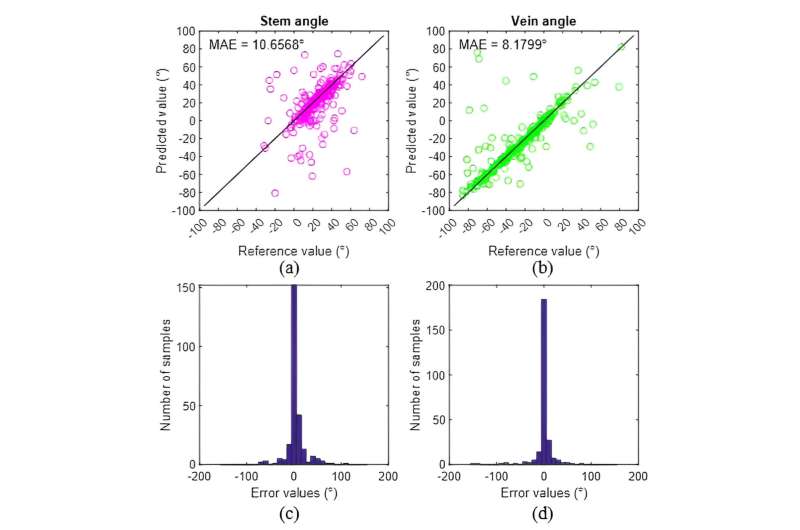This article has been reviewed according to Science X's editorial process and policies. Editors have highlighted the following attributes while ensuring the content's credibility:
fact-checked
trusted source
proofread
Exemplar-based data generation and leaf-level analysis for phenotyping drought-stressed poplar saplings

A research team has developed a novel method combining computer vision and deep learning to phenotype drought-stressed poplar saplings, achieving 99% accuracy in variety identification and 76% accuracy in stress-level classification.
This high-accuracy phenotyping approach leverages instance segmentation and multitask learning, offering precise drought-stress detection. The methods proposed hold significant potential for drought-resistant poplar screening and precise irrigation decision-making, fostering advancements in agricultural technology and plant stress management.
Poplar (Populus L.) is a fast-growing forest tree valued for its wood and role in protective forests. Current research focuses on enhancing woody biomass production despite abiotic and biotic stresses, with drought stress being a significant factor that impedes growth by affecting material transport and photosynthesis. However, traditional methods for identifying water-deficient plants or selecting drought-resistant varieties are inefficient and inaccurate.
A study published in Plant Phenomics on 21 Jun 2024, explores innovative computer vision and deep learning technologies to improve drought-stress detection and phenotyping in poplar saplings.
The research utilized instance segmentation and leaf posture digitalization to analyze poplar saplings. The FasterRCNN model was used to segment leaves, midveins, and petioles, outperforming YOLO models in some aspects. The segmentation accuracy was evaluated using AP0.5 values, with FasterRCNN showing higher performance for leaf segmentation and YOLO excelling in midvein and petiole detection.
The angles α and β, indicating leaf growth posture, were calculated, revealing errors only in incomplete segmentations. The mean absolute errors for petiole and midvein angle calculations were 10.7° and 8.2°, respectively. These results were validated with a new dataset, showing most errors within a range of [-5°, +5°].
The study confirmed the effectiveness of using segmentation models trained on a simulated dataset for accurate leaf posture analysis, despite some deviations under severe drought conditions. Further analysis indicated that the midvein's horizontal inclination angle was more affected by drought stress than the petiole's angle, proving the leaf posture calculation method's value in plant status analysis.
According to one of the study's lead researchers, Huichun Zhang, "The plant phenotyping methods presented in this study could be further used for drought-stress-resistant poplar plant screening and precise irrigation decision-making."
In summary, this study used computer vision and deep learning to phenotype drought-stressed poplar saplings, focusing on leaf posture calculation and stress-level identification. These methods significantly reduced manual annotation costs and demonstrated the potential for precise drought stress detection.
Future research will focus on improving segmentation accuracy and expanding these techniques to other plant species for enhanced agricultural management.
More information: Lei Zhou et al, Phenotyping for drought-stressed poplar sapling using exemplar-based data generation and leaf-level structural analysis, Plant Phenomics (2024). DOI: 10.34133/plantphenomics.0205
Provided by Chinese Academy of Sciences





















